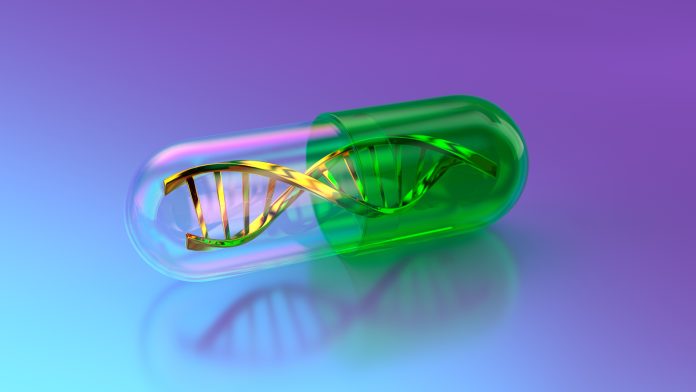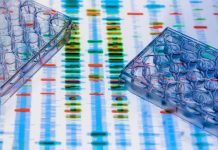Personalised medicine is best described as the tailoring of treatment based on an individual’s genomic sequence and biomarkers
The difference between genomic sequence and biomarkers lies in the degree of expression of an individual gene, which is largely determined by small non-coding stretches of RNA called microRNA (miRNA), which are invariably derived from another gene, sometimes on another chromosome.
The area that has generated the most interest is the speciality known as pharmacogenetics, which uses a patient’s alleles or genome sequence to determine which drug and dose are likely to be beneficial to an individual, rather than the “one size fits all” approach that has been the standard to date.
Chromosome sequencing has a role now in determining definitive alleles. Linkage disequilibrium is used to assign alleles in the CYP genes. This is fraught with danger, as often LD is different between racial groups, and between disease patients and controls. The concept of LD and haplotypes has also changed from their original description by Ruggero Ceppellini (1).
In their original form, they were used, in the case of haplotype, to designate a series of HLA genes that were on the same haplotype, as determined by family studies. The term is now used to describe a series of SNPs that comprise a putative allele in the absence of family studies.
Likewise, LD is now used to describe the phenomenon of a series of SNPs which comprise a putative allele, in contrast to its original use to describe HLA ancestral haplotypes containing multiple genes which have been inherited as “frozen” blocks of DNA, and the gene alleles contained within the blocks are therefore in linkage disequilibrium. (2). This can lead to a source of confusion amongst some molecular biologists.
Single-chromosome sequencing plays a role in not only defining alleles in the CYP genes but also in helping to identify and sequence miRNA molecules, which are often located on different chromosomes. Until the miRNA molecules are identified for each CYP allele, the goal of complete personalised medicine will remain elusive.
These are not questions that affect only a minority of patients, but have far-reaching consequences for the majority of patients. Clearly, there is still much to learn about the role of polymorphisms in determining disease susceptibility and clinical response to pharmaceutical agents; however, the HT haplotyping strategy has the potential to offer a new approach to investigating CYP polymorphisms.
Below is a list of CYP genes and the clinically used drugs which have been shown to be associated.
CYP2D6 – drugs include:
- Amitriptyline (tricyclic antidepressant)
- Aripiprazole (antipsychotic)
- Atomoxetine (selective norepinephrine reuptake inhibitor)
- Carvedilol (non-selective beta blocker & alpha blocker)
- Clozapine (antipsychotic)
- Codeine (opioid analgesic)
- Imipramine (tricyclic antidepressant)
- Metoprolol (beta blocker)
- Propafenone (antiarrhythmic)
- Risperidone (antipsychotic)
- Tamoxifen (selective estrogen receptor modulator (SERM))
- Thioridazine (antipsychotic)
- Tramadol (analgesic)
- Venlafaxine (antidepressant, serotonin & norepinephrine reuptake inhibitor)
CYP2C19 – drugs include:
- Amitriptyline (tricyclic antidepressant)
- Brivaracetam (antiseizure)
- Carisoprodol (muscle relaxant)
- Clopidogrel (antiplatelet agent)
- Diazepam (benzodiazepine (sedative, anticonvulsant))
- Esomeprazole (proton pump inhibitor)
- Imipramine (tricyclic antidepressant)
- Lacosamide (antiseizure)
- Omeprazole (proton pump inhibitor)
CYP2C9 – drugs include:
- Celecoxib (NSAID – inhibits COX-2)
- Flurbiprofen (NSAID)
- Lesinurad (urate transport inhibitor)
- Phenytoin (antiseizure)
- Piroxicam (NSAID)
CYP1A2 – drugs include:
- Clozapine (antipsychotic)
CYP3A4 – drugs include:
- Clozapine (antipsychotic)
In a specific case of gene interaction, Owen et al (3) from the Stanford Medical Centre reported in a review paper in the journal of Pharmacogenetics and Genomics that polymorphisms in the VKORC1 gene influence the level of Warfarin dose required in individual patients.
The VKORC1 gene codes for an enzyme, Vitamin K epoxide reductase, which converts Vitamin K epoxide to active Vitamin K. Reduced levels of Vitamin K are of clinical importance in the function of several coagulation factors. Warfarin acts as an inhibitor of VKORC1, hence influencing the levels of coagulation factors. In fact, VKORC1 genotypes are the best predictors of Warfarin dose.
Interestingly, CYP2C9 plays a role in Warfarin metabolism, suggesting the requirement for gene interaction studies to fully appreciate the role these polymorphisms play.
Single-chromosome sequencing will play a role in the future in helping to sort out the alleles involved.
Acknowledgements
The author wishes to acknowledge the assistance of Grant Mraz in putting together the list and categories of drugs associated with the CYP genes.
References
- Ceppellini R. In Ceppellini (ed) (1968). Histocompatibility Testing 1968. Pub Munksgaard Copenhagen.
- Guadieri S. et al. Journal of Molecular Evolution.1997 45 pp 17-23.
- Owen RP. et al. Pharmacogenetics and Genomics.20(10), pp 642-644.








